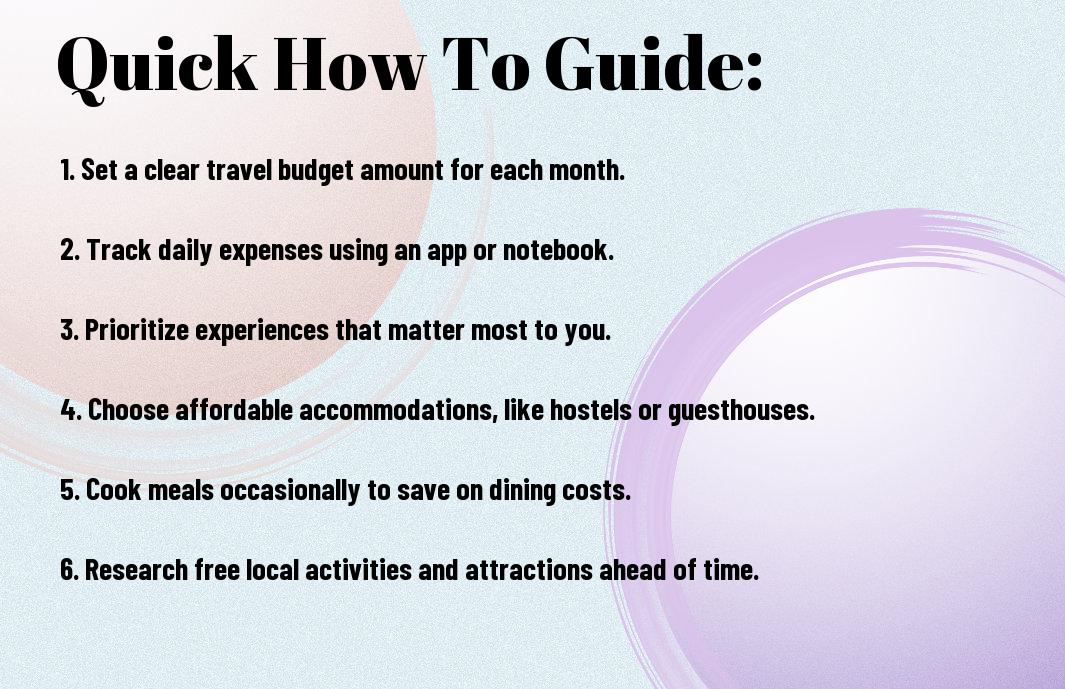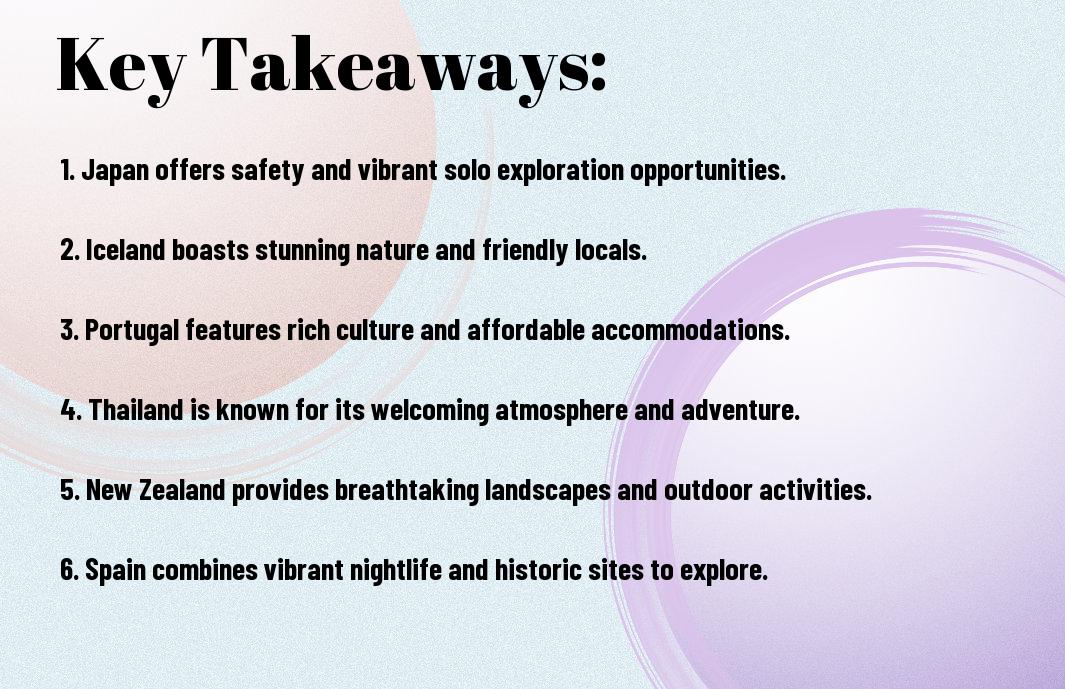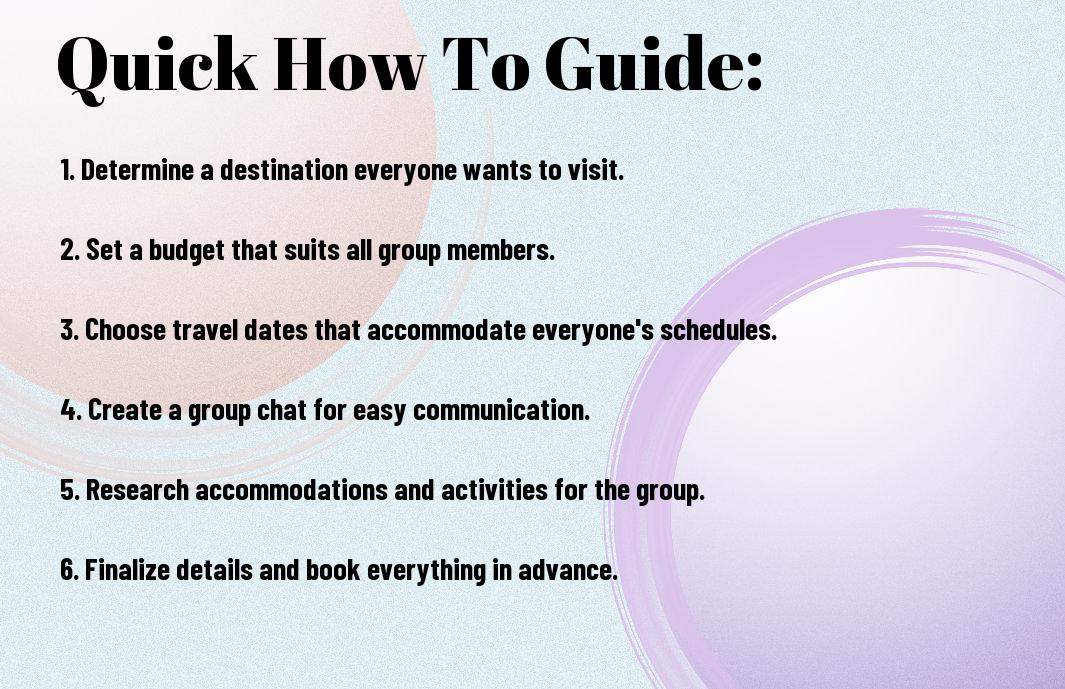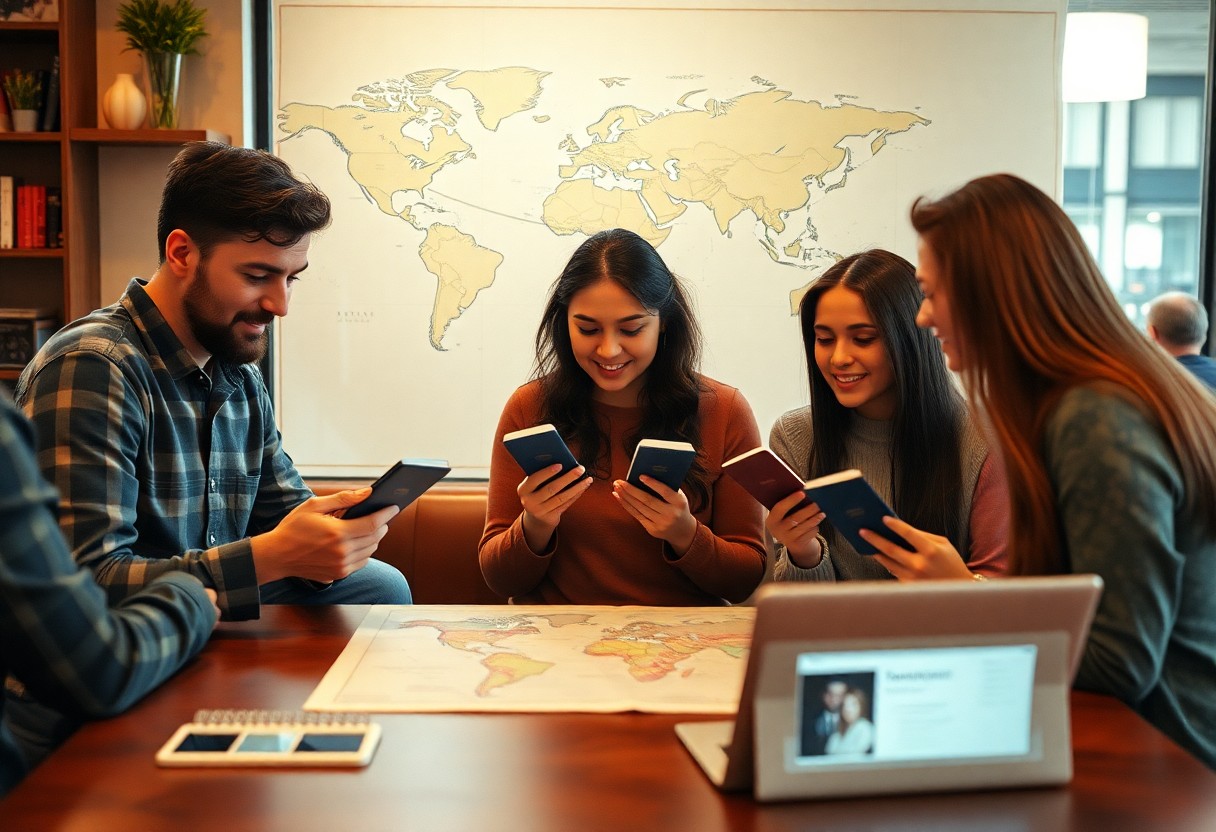Many travelers are constantly on the lookout for affordable international flights, and navigating the myriad of options can be daunting. In this guide, you’ll uncover insider tips and strategies to help you score the best deals on flights around the globe. From timing your bookings to utilizing the right tools, you’ll learn how to make the most of your travel budget, ensuring your next adventure doesn’t break the bank. Let’s explore the necessary tips you need to travel smartly and economically.
Key Takeaways:
- Flexibility is vital: Being open to different travel dates and times can help you discover lower fares.
- Utilize fare comparison tools: Websites and apps that compare prices across multiple airlines can save you significant money.
- Book in advance: Securing your flights a few months ahead of travel can often yield better prices.
- Consider alternative airports: Flying into or out of less busy airports can often lead to cheaper tickets.
- Sign up for price alerts: Many travel websites offer alerts that notify you when prices drop for specific routes.

Understanding the Factors that Affect Flight Prices
Your flight prices are determined by a variety of factors, including demand, competition, and time of booking. To navigate the complexities of airfare, consider these key elements:
- Time of year and seasonality
- Flight duration and layovers
- Availability of budget airlines
- Booking time frame and flexibility
Any travel enthusiast can benefit from understanding these factors to score better deals.
Seasonal Variations
The price of flights often fluctuates with the seasons. High travel seasons, like summer and the winter holidays, typically see increased demand, driving prices up. Conversely, traveling during off-peak seasons, such as early spring or late fall, can yield significantly cheaper fares.
Travel Class and Flexibility
An important aspect that influences flight prices is the travel class you choose and how flexible your travel dates are. Economy class is generally more budget-friendly compared to premium classes. Moreover, having a flexible itinerary allows you to take advantage of lower fares on less popular travel days.
A flexible traveler can easily find lower prices by adjusting their travel dates or choosing flights at less desirable times. Consider using fare alerts and comparison tools to monitor price changes. Opt for red-eye flights or mid-week departures, which often see decreased demand. By being adaptable, you can open up a whole new range of cost-effective options for your adventures.
How to Use Flight Search Engines Effectively
You can significantly streamline your search for cheap international flights by mastering flight search engines. Start by entering your travel details and letting the engines do the heavy lifting. Experiment with different dates and nearby airports to uncover the best deals, and always check multiple search engines for comprehensive results. This will give you a broader picture of your options and ensure you snag the lowest prices for your journey.
Utilizing Filters and Alerts
Engines are equipped with various filters that allow you to refine your search based on your preferences, such as budget, flight duration, and number of stops. By setting alerts for your desired routes, you can stay updated on price drops and snag great deals as soon as they arise. This strategy not only saves you time but also maximizes your chances of finding flights that fit your requirements.
Comparing Prices Across Multiple Platforms
Clearly, comparing prices across multiple platforms can radically change your traveling experience. Each flight search engine may offer different rates for the same flights due to various factors like partnerships, commissions, or exclusive deals. Tracking the same flight on multiple sites ensures you don’t miss a better price somewhere else.
Effective Comparison Table
| Flight Search Engine | Unique Features |
|---|---|
| Google Flights | Flexible date search; price tracking |
| Skyscanner | Whole month view; price alerts |
| Kayak | Explore feature for budget trips |
| Momondo | Price trends; multi-city search |
Effectively utilizing various flight search platforms allows you to harness the strengths of each one, presenting a wide array of options and rates. By regularly comparing flights and creating alerts, you can capitalize on the most favorable prices. Ultimately, this diligent approach can result in substantial savings and a more enjoyable travel experience, empowering you to explore the world without overspending.
Tips for Booking at the Right Time
For securing the best deals on international flights, timing your booking is vital. Here are some tips to consider:
- Book flights at least 2-3 months in advance.
- Avoid peak travel seasons and holidays.
- Be flexible with your travel dates.
- Set alerts for flight price drops.
The savvy traveler knows that planning ahead can lead to significant savings. For more strategies on minimizing costs, check out Travel Hacking: Saving Money and Finding Cheap Flights.
Knowing the Best Days to Book
Time your bookings wisely by focusing on the best days to purchase flights. Traditionally, Tuesdays and Wednesdays are recommended as airlines often release fare discounts on these days, making them prime times for shopping. By targeting these days, you can take advantage of the lowest rates available.
Monitoring Price Trends
There’s a wealth of information available that can help you track flight prices over time. By utilizing flight aggregator sites, you can easily assess historical and current flight pricing patterns, which gives you an edge in spotting the best deals.
Booking tools and apps often provide insights into seasonal trends and predicted price changes, allowing you to anticipate fare fluctuations. Many travelers find that setting up alerts for their desired routes can lead to timely notifications when prices drop, helping you snatch up tickets before they skyrocket again.
Exploring Alternative Airports
Now, when searching for the best international flight deals, don’t just stick to major airports. Exploring alternative airports nearby can often lead to significant savings. Smaller airports frequently have lower operating costs, meaning airlines can offer cheaper flights. Plus, many low-cost carriers operate out of these airports, providing additional options that could fit your budget. Be flexible with your departure and arrival points to uncover hidden gems that might save you money and enhance your travel experience.
Advantages of Nearby Airports
Little do many travelers know, opting for nearby airports can lead to lower ticket prices and increased competition among airlines. These airports often experience less traffic, making the boarding process smoother and potentially offering greater convenience. You can find less crowded terminals and shorter lines, enhancing your travel experience while saving some cash.
Considering Transportation Costs
Nearby airports can be a fantastic option, but you should also factor in transportation costs to and from the airport. Sometimes, the savings on your flight can be offset by higher transportation fees. Evaluating the distance to your final destination and the available public or private transport options is key. Look for convenient shuttle services, or compare rideshare rates that fit within your travel budget.
Another important consideration when assessing transportation costs is to explore the facilities surrounding nearby airports. Some areas might offer more economical transportation options like public transit routes or shuttle services that cater specifically to travelers. Additionally, you might find better deals on parking if you plan to drive. Balancing these factors can help you make an informed decision and ensure that your overall travel costs remain low while enjoying the benefits of alternative airports.

Being Flexible with Travel Dates
Despite having a fixed destination in mind, being flexible with your travel dates can significantly reduce the cost of your international flights. Airlines often have fluctuating prices based on demand, seasonality, and even days of the week. If you can adjust your departure and return within a few days, you may uncover substantial savings. Utilize fare alerts, and keep an open mind about your travel schedule to snag the best deals possible.
Identifying Off-Peak Travel Times
Clearly, traveling during off-peak times can lead to more affordable airfare options. This typically means avoiding major holidays and peak tourist seasons when demand surges. Instead, consider traveling mid-week or during shoulder seasons when fewer people are flying. Doing so will not only save you money but may also lead to a more enjoyable travel experience with fewer crowds.
Leveraging Date Range Searches
There’s a good chance you can find cheaper flights by using date range searches. Many flight booking websites allow you to view fares over an extended period, helping you spot the best deals without selecting specific dates. This feature can be invaluable in finding significant price differences from one day to the next.
Leveraging date range searches enables you to explore flexible options that may not be readily apparent when searching for specific dates. By adjusting your travel window, you can compare prices across a broader spectrum and identify trends that suggest when fares are lower. This strategy not only simplifies your search process but also enhances your chances of discovering hidden deals, ultimately allowing you to travel for less.
Leveraging Airline Loyalty Programs
Not all travelers take full advantage of airline loyalty programs, but doing so can significantly enhance your travel experience. By signing up for these programs, you can unlock a range of benefits that may include priority boarding, seat upgrades, and access to exclusive lounges, all while earning valuable points for future flights.
Benefits of Frequent Flyer Programs
Frequent flyer programs offer numerous advantages, such as earning miles for every trip you take, which can lead to free flights or upgrades. Your loyalty to a specific airline can also provide benefits like reduced fees, travel flexibility, and tailored customer service that enhance your overall travel experience.
Earning and Redeeming Miles
Miles can be earned through flights, credit card purchases, and even partnerships with hotels or car rental services. As you accumulate miles, you will have the ability to redeem them for free flights, cabin upgrades, or even discounted travel packages, making them an excellent way to lower your travel costs.
With various ways to earn miles, such as flying with partner airlines or using co-branded credit cards, your opportunities for accumulating points are plentiful. Additionally, keeping an eye on promotions and bonus offers from airlines can help you earn more miles in less time. Once you have enough miles, take advantage of redemption options, which can include not just flights but also hotel stays and travel experiences, making your travel budget stretch further. Investing time in understanding these programs can lead to significant savings and enhanced travel perks.
Summing up
Now that you have the insider tips to find cheap international flights, you can confidently search for the best deals tailored to your travel plans. Utilize flexible travel dates, comparison sites, and fare alerts to enhance your chances of landing affordable tickets. Don’t hesitate to explore nearby airports and consider budget airlines. By applying these strategies, you can optimize your search, making international travel more accessible and enjoyable for you.
Q: What are the best times to book international flights for the lowest prices?
A: Generally, the best times to book international flights are about 2 to 3 months in advance for destinations that are popular. For less busy times of the year, you may find deals if you book between 3 weeks to 2 months ahead. Additionally, flying on weekdays, especially Tuesday and Wednesday, can also yield lower fares compared to weekend flights. Monitoring flight prices regularly and using fare alert tools can help you snag a deal when prices drop.
Q: How can I utilize flexible travel dates to find cheaper international flights?
A: Flexibility with your travel dates is one of the best strategies for finding cheaper flights. Many flight search engines offer options to view prices across a range of dates. If you can adjust your departure or arrival by a few days, you may notice significant savings. Additionally, consider flying during off-peak seasons or splitting your trip—flying into one city and returning from another can sometimes reduce costs.
Q: What role do budget airlines play when searching for cheap international flights?
A: Budget airlines can be a fantastic resource for finding low-cost international flights, especially for short-haul routes. Make sure to research various budget carriers that operate in your desired regions, as they often provide competitive rates compared to traditional airlines. However, pay attention to additional fees, such as baggage charges and seat selection, which may affect the overall cost. Combining budget airlines with standard carriers for longer legs of your journey could help you save money effectively.







